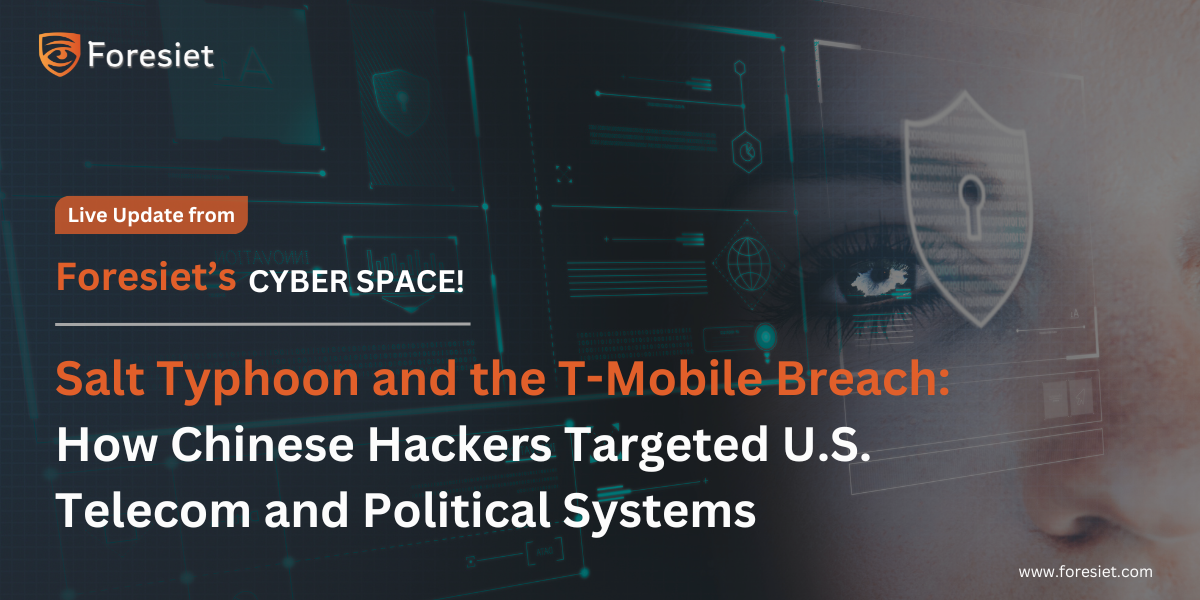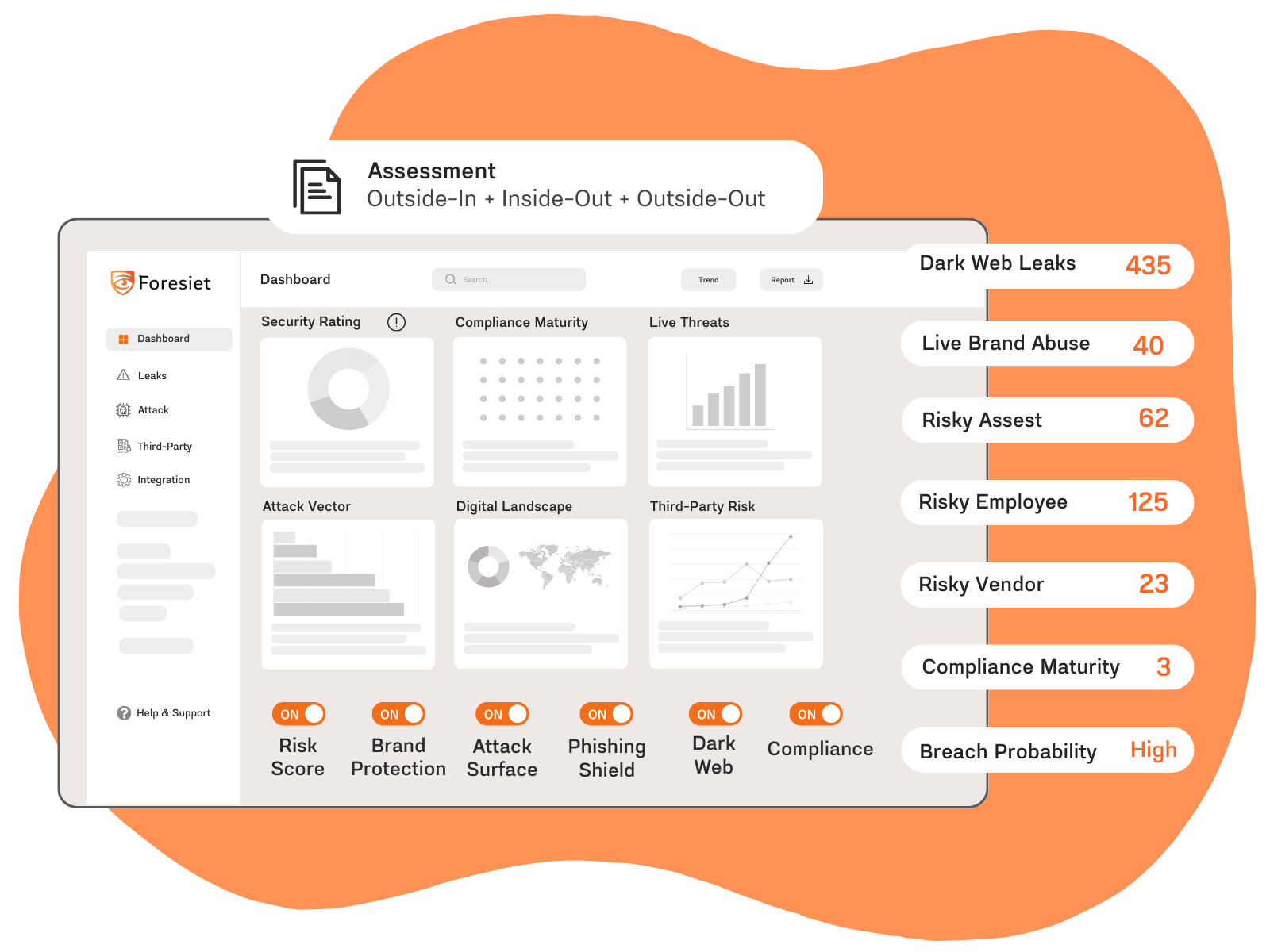Salt Typhoon and the T-Mobile Breach: How Chinese Hackers Targeted U.S. Telecom and Political Systems

Executive Summary
Salt Typhoon, a Chinese state-sponsored hacking group, has emerged as one of the most significant cyber threats to U.S. critical infrastructure. Initially identified in 2020, with increased recognition of their activities in 2021, the group has been linked to high-profile cyber espionage campaigns targeting U.S. telecommunications companies. Salt Typhoon has leveraged advanced, stealthy methods to infiltrate networks, compromise wiretapping systems, and access sensitive communications of high-ranking officials and political figures.
Their activities, which are believed to align with Chinese state interests, highlight the vulnerabilities in the telecommunications sector and underscore the critical need for robust cybersecurity measures.
Introduction
In recent years, cybersecurity threats have become increasingly sophisticated, with state-sponsored actors leading some of the most damaging campaigns. Salt Typhoon, a relatively new hacking group believed to be backed by the Chinese government, represents a growing concern. Since their identification, the group has been linked to espionage campaigns targeting telecommunications providers like AT&T, Verizon, and T-Mobile, posing severe risks to national security and the integrity of critical infrastructure.
Origins and Key Activities
Salt Typhoon was first identified in 2020, with researchers connecting their activities to Chinese state-sponsored espionage. By 2021, the group’s operations became more apparent as they increasingly targeted high-value sectors, particularly telecommunications.
Initial Identification (2020-2021)
The group’s early campaigns focused on data theft and espionage, often undetected for months. These operations primarily aimed at gathering intelligence and gaining persistent access to vital systems. Researchers began linking Salt Typhoon to the Chinese government, citing their alignment with Beijing’s geopolitical interests.
Targeting Telecommunications Providers (2023-2024)
In recent months, Salt Typhoon has shifted its focus to U.S. telecommunications firms, successfully breaching systems at major providers, including AT&T, Verizon, Lumen Technologies, and T-Mobile. Their attacks have primarily targeted wiretap systems, which telecom companies are required to maintain for law enforcement purposes. These breaches allowed the group access to sensitive communications, including call logs and text messages of U.S. government officials.
Key Characteristics of Salt Typhoon
Salt Typhoon's success in cyber espionage stems from their advanced methodologies and strategic targets. Below are some defining characteristics of the group:
- State-Sponsored Origins
The group is believed to operate under the direct sponsorship of the Chinese government, aligning their campaigns with national intelligence objectives. - Stealth and Sophistication
Salt Typhoon employs highly advanced and stealthy tactics, enabling them to infiltrate systems undetected for long periods. Their focus on evading detection highlights their technical expertise. - Strategic Targeting
Their primary targets include U.S. telecommunications networks and devices used by political figures. These operations have focused on wiretapping systems, which hold immense strategic value. - Impact on National Security
Considered one of the most damaging cyber threats attributed to China, Salt Typhoon’s campaigns jeopardize U.S. critical infrastructure, compromising sensitive communications and posing risks to law enforcement operations.
Detailed Overview of Activities
Breaches in Telecommunications Systems
Salt Typhoon’s activities in 2023 and 2024 have revolved around attacking major U.S. telecom providers. These breaches have had significant repercussions:
- T-Mobile Incident (November 2023): Salt Typhoon infiltrated T-Mobile’s wiretap systems, accessing sensitive data, including call logs and messages from government officials.
- Impacts on Other Providers: Similar attacks targeted AT&T, Verizon, and Lumen Technologies, exposing vulnerabilities in systems vital to national security.
- Customer Assurance: While T-Mobile assured that customer data was largely unaffected, the breach’s impact on sensitive communication systems cannot be understated.
Political Espionage Campaigns
Salt Typhoon has also reportedly targeted communication devices of prominent U.S. political figures, including former President Donald Trump. These attacks indicate a broader strategy focused on gathering intelligence that could influence or undermine political processes.
T-Mobile’s Struggles with Cybersecurity
T-Mobile has been a recurring victim of cyberattacks, highlighting ongoing vulnerabilities in its infrastructure. Below is a timeline of significant incidents:
- November 2019: Hackers accessed over one million prepaid customer accounts, compromising personal information.
- August 2021: A major breach exposed personal data of 77 million individuals, including Social Security numbers.
- January 2023: A breach affected 37 million users, exposing personal details such as names and billing information.
- November 2023: Salt Typhoon’s infiltration of T-Mobile marked another major attack, compromising wiretap systems critical for law enforcement.
- June 2024: A hacker known as IntelBroker claimed to have breached T-Mobile, allegedly stealing sensitive data. However, T-Mobile denied the claims, attributing the incident to a third-party vendor breach.
These repeated incidents demonstrate the persistent vulnerabilities faced by telecommunications companies in safeguarding sensitive data.
Stealthy Tactics of Salt Typhoon
Salt Typhoon employs a range of sophisticated methods for their cyber activities, primarily focusing on advanced persistent threat (APT) techniques. These methods enable the group to remain undetected while gathering intelligence and compromising critical infrastructure. Key tactics include:
- Living off the Land Techniques: By using existing system tools like PowerShell and WMIC, Salt Typhoon avoids detection while performing actions such as system discovery and credential theft.
- Compromising Network Devices: The group targets routers and other network devices to maintain persistent access to the network.
- Espionage-Oriented Activities:Their primary focus is to collect sensitive data, such as wiretaps from ISP networks, through stealthy data exfiltration techniques.
- Exploiting Vulnerabilities: Salt Typhoon takes advantage of known vulnerabilities in telecom infrastructure to gain unauthorized access.
These techniques highlight the stealth and precision of Salt Typhoon's cyber operations, making them a significant threat to national security and communication systems.
National Security Implications
The activities of Salt Typhoon underscore the urgent need for enhanced cybersecurity in the telecommunications sector, which is classified as critical infrastructure.
- Risks to Law Enforcement and National Security
The breach of wiretap systems compromises law enforcement’s ability to monitor criminal activities securely. Sensitive communications accessed during these breaches could also have far-reaching consequences for national security. - Call for Strengthened Defenses
The incidents involving Salt Typhoon highlight the need for comprehensive cybersecurity reforms across the telecommunications sector. Robust defenses, continuous monitoring, and collaboration between federal agencies and private entities are crucial to mitigate such threats. - Federal Response
Agencies such as the FBI and CISA are actively investigating Salt Typhoon’s activities. These agencies emphasize the importance of improved incident response mechanisms and proactive measures to address vulnerabilities
Mitigation Measures
To counter the threats posed by Salt Typhoon and similar state-sponsored hacking groups, implementing robust mitigation measures is crucial. Telecommunications companies should prioritize adopting advanced cybersecurity frameworks to detect, prevent, and respond to cyber threats. Enhancing network segmentation and securing critical infrastructure, such as wiretap systems, can limit the attackers’ ability to access sensitive data.
Deploying AI-driven threat detection tools and continuous monitoring can help identify unusual activities and potential breaches in real time. Strengthening collaboration between private organizations and federal agencies, such as the FBI and CISA, can improve threat intelligence sharing and coordinated responses.
Regular vulnerability assessments, patch management, and the adoption of zero-trust security models are essential to minimize attack surfaces. Additionally, companies must invest in employee training and awareness programs to ensure adherence to best practices in cybersecurity.
Tactics, Techniques, and Procedures (TTPs) of Salt Typhoon
Based on their known activities, we can infer the methods they employ by examining common practices among state-sponsored cyber espionage groups, especially those focused on infiltrating critical infrastructure like telecommunications systems. Here’s a detailed breakdown of their likely TTPs:
| Tactic | Technique | Description |
|---|---|---|
| Initial Access | Exploitation of Public-Facing Applications (T1190) | Command and Scripting Interpreter |
| Valid Accounts (T1071.001) | Utilizing stolen or leaked legitimate credentials to bypass traditional access barriers, ensuring stealthy entry into systems. | |
| Execution | Command and Scripting Interpreter (T1059) | Executing commands through native system tools like PowerShell or command-line interfaces, minimizing the need for external malware. |
| Windows Management Instrumentation (WMIC) (T1047) | Using WMIC for executing commands on remote systems and maintaining stealthy control within the network environment. | |
| Persistence | Web Shell (T1100) | Establishing backdoors through web shells or compromised network devices, ensuring long-term access despite network changes. |
| Create or Modify System Process (T1543) | Creating or modifying legitimate processes to maintain persistence, often through VPN connections to blend in with legitimate traffic. | |
| Privilege Escalation | Exploitation of Vulnerabilities (T1068) | Using unpatched vulnerabilities within operating systems or applications to escalate privileges and gain elevated access within the network. |
| Bypass User Account Control (T1088) | Bypassing security controls like UAC to elevate privileges and perform unauthorized actions on target systems. | |
| Credential Access | Credential Dumping (T1003) | Harvesting credentials using tools like Mimikatz or dumping information from LSASS (Local Security Authority Subsystem Service) to facilitate lateral movement. |
| Brute Force (T1110) | Cracking weak or default passwords through brute force to gain additional access to sensitive systems and data. | |
| Discovery | System Information Discovery (T1082) | Gathering system information, such as OS details, to better understand the environment and identify valuable targets for exploitation. |
| Network Share Discovery (T1135) | Identifying network shares and connected devices, locating sensitive data repositories or systems to exfiltrate later. | |
| Lateral Movement | Remote Desktop Protocol (RDP) (T1076) | Using stolen or compromised credentials to access remote systems via RDP, allowing attackers to navigate laterally across the network. |
| Exfiltration | Exfiltration Over Command and Control Channel (T1041) | Using encrypted or stealthy communication channels to exfiltrate sensitive data, ensuring the exfiltration remains undetected by security measures. |
| Exfiltration Over Other Network Medium (T1011) | Transferring data over legitimate communication protocols, like SMB or FTP, to avoid detection by traditional network monitoring tools. |
These TTPs suggest that Salt Typhoon is a highly sophisticated threat actor with a well-planned approach to cyber espionage, focused primarily on telecommunications infrastructure, data theft, and maintaining covert access to critical systems.
Conclusion
Salt Typhoon’s activities underscore the growing challenges in safeguarding critical infrastructure against state-sponsored cyber threats. These incidents highlight the urgent need for strengthened defenses across the telecommunications sector.
Foresiet remains committed to monitoring and investigating the evolving tactics of Salt Typhoon and other threat actors, providing insights and recommendations to enhance cybersecurity and protect national interests.
About us!
Foresiet is the pioneering force in digital security solutions, offering the first integrated Digital Risk Protection SaaS platform. With 24x7x365 dark web monitoring and proactive threat intelligence, Foresiet safeguards against data breaches and intellectual property theft. Our robust suite includes brand protection, takedown services, and supply chain assessment, enhancing your organization's defense mechanisms. Attack surface management is a key component of our approach, ensuring comprehensive protection across all vulnerable points. Compliance is assured through adherence to ISO27001, NIST, GDPR, PCI, SOX, HIPAA, SAMA, CITC, and Third Party regulations. Additionally, our advanced antiphishing shield provides unparalleled protection against malicious emails. Trust Foresiet to empower your organization to navigate the digital landscape securely and confidently.
Protect your brand, reputation, data, and systems with Foresiet's Integrated Digital Risk Platform. 24/7/365 threat monitoring for total peace of mind.


